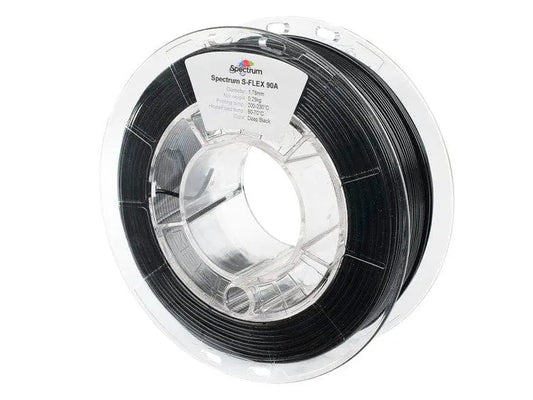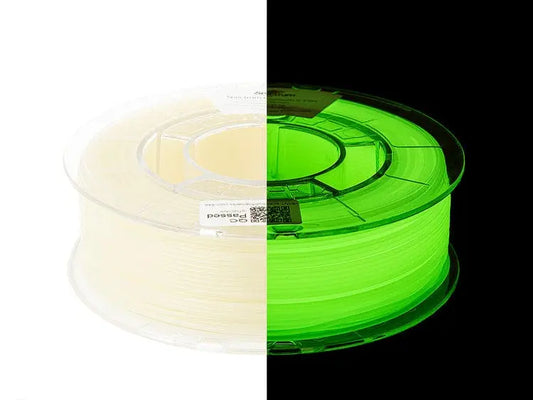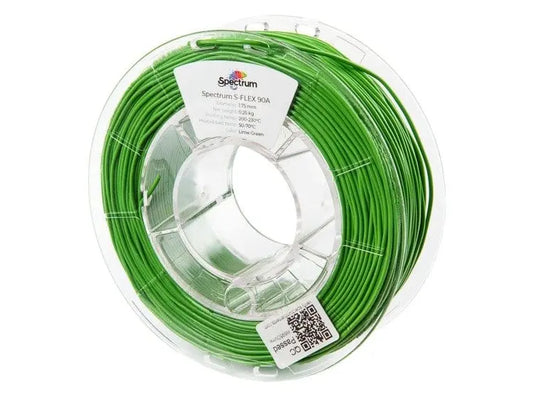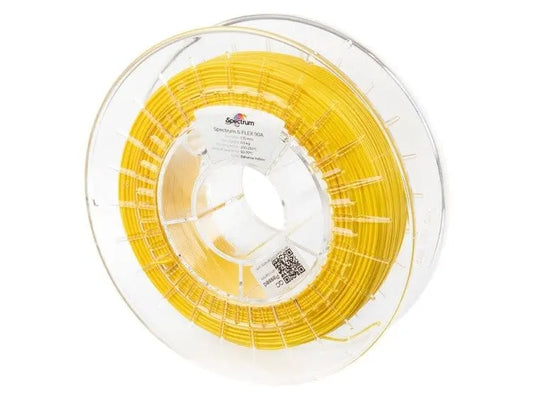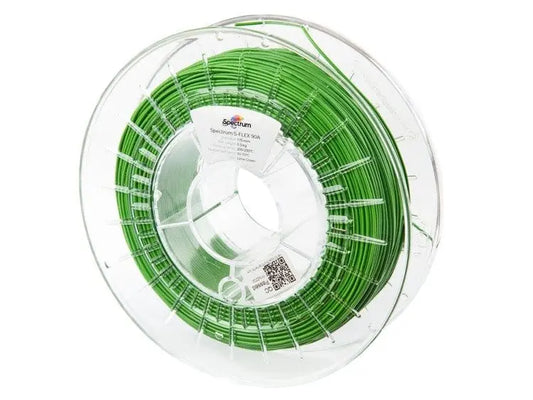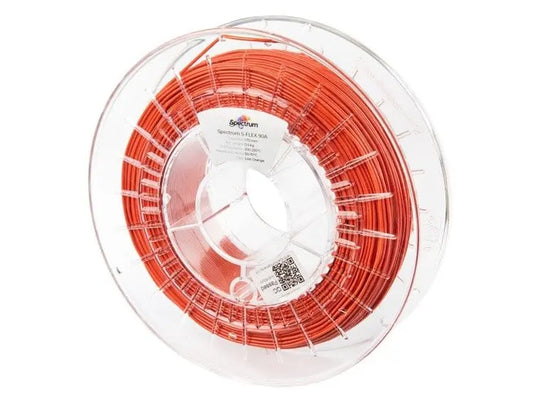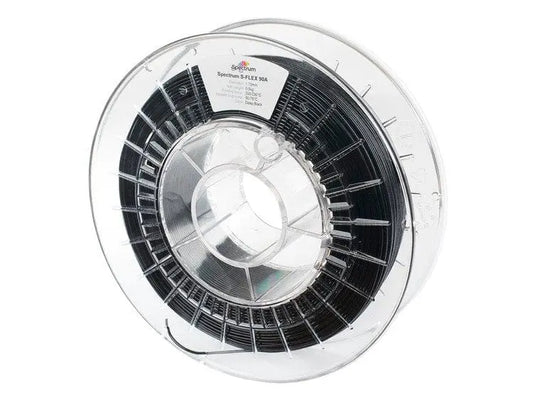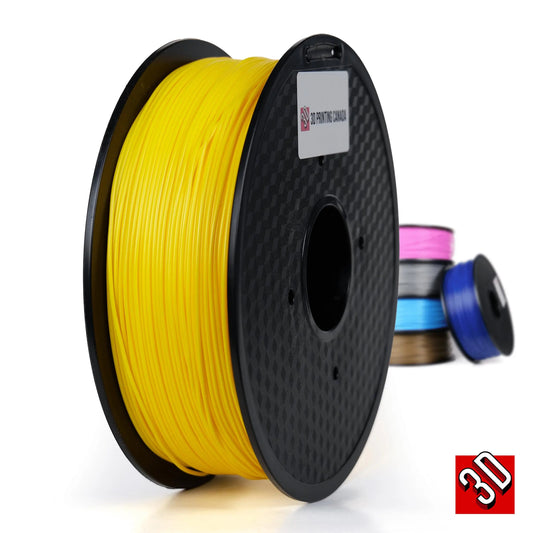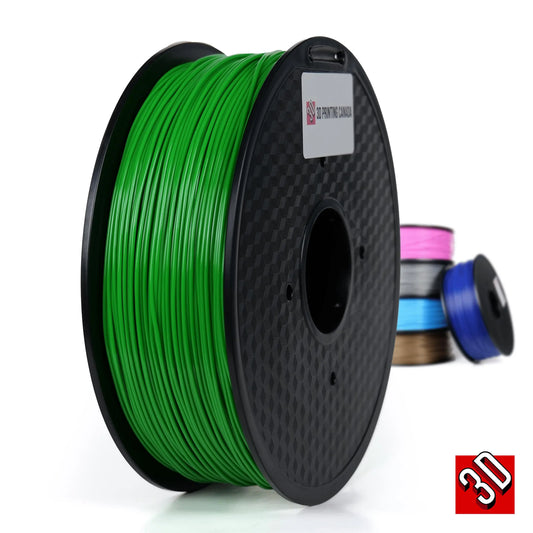Do you need to prototype intricate designs, create shock-absorbent components, or craft custom grips and covers and are looking for reliable filaments? You are at the right place! 3D Printing USA carries a high-quality TPU filament range sourced from leading manufacturers. Made of premium thermoplastic polyurethane, TPU filaments in our inventory are designed to perform exceptionally well in various uses. For perfect prints every time, the sophisticated formulation guarantees smooth extrusion, less stringing, and excellent adherence to the build plate. So, forget those brittle prints and welcome the designs that bend, stretch, and bear impact without compromising the quality! Check out our collection and order according to your requirements…
TPU Filaments Brands in Our Collection
NinjaTek
Renowned for its high-performance filaments, NinjaTek provides highly adjustable and long-lasting TPU filaments, including NinjaFlex and Cheetah. These filaments provide constant, excellent prints by being perfect for producing complex patterns and strong, flexible components.
Spectrum
Spectrum's TPU filaments are notable for their brilliant color range and accurate manufacturing. Both practical prototypes and visually appealing prints benefit greatly from their outstanding flexibility, strength, and surface polish. The dedication of Spectrum to quality guarantees dependable and constant printing results and made us add this brand of products to our reliable TPU filament assortment.
3D Printing USA
3D Printing USA's in-house TPU filaments provide exceptional results with little warping and a good surface polish. Our brilliant color palette meets various needs, guaranteeing easy printing for professional-looking products.
Applications and Use Cases of TPU Flexible Filaments
Prototyping Flexible Components
TPU filaments are ideal for prototypes that need flexibility and durability. Engineers and designers may utilize TPU to imitate the characteristics of rubber-like materials, allowing concepts to be tested in real-world circumstances. This is especially beneficial for goods like flexible sockets, gaskets, and seals.
Custom Grips and Handles
The ergonomic design of bespoke grips and handles benefits greatly from TPU's soft and flexible nature. This application ranges from tool grips and bicycle handlebars to personalized game controllers, delivering comfort and an enhanced user experience.
Wearable Gadgets and Accessories
Wearable technology demands materials that can bear constant movement and wear down. TPU’s strength and flexibility make it an excellent choice for printing wearable gadgets such as smartwatch bands, fitness tracker straps, and custom-fit medical devices like orthotics and prosthetics.
Shock Absorbent Parts
For applications requiring shock absorption, TPU filament’s ability to dissipate energy makes it ideal for producing electronic device bumpers, vibration dampeners, and protective casings. Its impact resistance helps in safeguarding delicate components from damage.
Automotive and Industrial Parts
The automobile sector uses TPU to print flexible ducts, tubing, and seals that must be durable and flexible. TPU's abrasion resistance and flexibility make it helpful in fabricating conveyor belts and other equipment components.
Artistic and Custom Designs
Artists and designers use TPU's adaptability to create unique jewelry, fashion items, and detailed sculptures. The capacity to develop flexible, complicated forms broadens the creative possibilities in art and design.
Recommended Printer Settings for TPU Filaments
Achieving optimal results with TPU filaments requires specific printer settings to accommodate their flexible nature. Here are the key settings to ensure high-quality prints:
Extruder Temperature
- Range: 220°C to 250°C
- Optimal: 230°C to 240°C
- Start at the lower end and adjust as needed for consistent extrusion.
Bed Temperature
- Range: 50°C to 70°C
- Optimal: 60°C
- Use a heated bed to enhance adhesion and reduce warping. Applying a thin layer of glue stick or using painter’s tape can further improve bed adhesion.
Print Speed
- Range: 15 mm/s to 30 mm/s
- Optimal: 20 mm/s to 25 mm/s
- Lower speeds help manage the flexible filament, preventing stringing and ensuring accurate layer deposition.
Retraction Settings
- Distance: 1 mm to 4 mm
- Speed: 20 mm/s to 40 mm/s
- Adjust retraction settings to minimize stringing while avoiding filament clogging.
Layer Height
- Range: 0.1 mm to 0.3 mm
- Optimal: 0.2 mm
- A finer layer height enhances surface quality and detail.
Cooling Fan
- Speed: 0% to 50%
- Minimal cooling is recommended to prevent warping and ensure proper layer adhesion.
Extruder Type
- Recommended: Direct drive extruders are ideal because they control flexible filaments better. Bowden extruders can work with additional tuning and slower print speeds.
Print Bed Surface
- Glass, PEI, or BuildTak surfaces work well. Consider applying a glue stick or blue painter’s tape for improved adhesion.
These parameters provide the groundwork for effective printing with TPU filaments, delivering smooth, high-quality output. Adjustments may be required dependent on your printer and project specifications.
Factors to Consider When Choosing TPU Filaments
When choosing the ideal filaments for your 3D printing-related needs, you should pay attention to several factors, including:
Shore Hardness
In the market, TPU filaments are available in varying degrees of hardness, typically measured on the Shore scale. Lower Shore values (For instance, 85A) indicate softer, more flexible TPU, suitable for highly elastic parts. Higher Shore values (For example, 95A) provide more rigidity and are better for components requiring structural integrity.
Diameter Consistency
Ensure the filament has a consistent diameter (e.g., 1.75 mm or 2.85 mm) to avoid extrusion issues and maintain print quality. Variations can cause clogging or under-extrusion.
Compatibility
Check that the filament is suitable with your 3D printer, especially if you're using a Bowden extruder, which may need extra adjustment to handle flexible filaments well.
Print Temperature Range
Choose TPU with a suitable print temperature for your printer’s capabilities, typically between 220°C and 250°C.
Frequently Asked Questions
What are the color options available for TPU filaments?
The color options available for TPU filaments include Steel Gray, Snow White, Midnight Black, Transparent Violet, Gold, Galaxy Blue, Mango Mojito, Kaoss Purple, Luminous Green, Liquid Luster, Glow in Dark Green, Lime Green, Bloody Red, and many more vibrant shades.
Is TPU filament suitable for creating flexible parts and prototypes?
Yes, TPU filament is suitable for making flexible components and prototypes because of its high elasticity, resilience, and abrasion resistance. It provides dependable performance in applications that need flexibility, such as bespoke grips, wearables, and shock-absorbing components.
Can TPU filament be used with all types of 3D printers and extruders?
TPU filament can be used with most 3D printers, but it performs best with direct drive extruders due to its flexibility. Bowden extruders may require additional tuning to handle TPU effectively and prevent filament buckling.
Can TPU filament prints be recycled or disposed of responsibly?
Yes, TPU filament prints may be recycled using mechanical or chemical recycling techniques. However, adequate sorting and management are required to permit responsible disposal while minimizing environmental damage.
What are the storage and handling recommendations for TPU filament?
TPU filament should be stored in a dry, cold environment, preferably in a sealed container with desiccant to avoid moisture absorption. Use within 6 months to ensure the best printability and quality.

